#SpatialPractices
Explore tagged Tumblr posts
Text
🎧✨ Sonic Investigations at La Biennale di Venezia ✨🎧 📍 Luxembourg Pavilion | 19th International Architecture Exhibition – La Biennale di Venezia 🗓️ 10 May – 23 November 2025 📍 Arsenale, Sale d’Armi, 1st floor 👀 Preview Days: 8–9 May | 🚪 Official Opening: May, 4PM CEST 🎙️ Curators’ Tour: 8 May, 2PM CEST 📖 Book Launch & Performance: 10 May, 6–9PM at Ca’Buccari Curated by @valentinbansac, Mike Fritsch, and Alice Loumeau with contributions by Ludwig Berger and philosopher Peter Szendy, Sonic Investigations invites you to tune in and listen deeply to the sonic layers of Luxembourg and beyond. 🌍🔊 In a world dominated by visuals, this immersive pavilion shifts the focus to sound – from data centres to forests, from the hum of infrastructure to the quiet of extinction. Inspired by Acoustic Ecology and Sonic Warfare, the project challenges conventional spatial narratives and reimagines territories through listening. 🌀🌱 🎶 Featuring: 🔊 Ecotonalities: No Other Home Than the In-Between by Ludwig Berger 📡 “Long Throw” by Anthea Caddy with text by Peter Szendy 📚 Ecotones: Investigating Sounds and Territories – book launch 10 May Come experience a new kind of architecture – one that resonates. 🔗 [www.venicebiennale.kulturlx.lu](http://www.venicebiennale.kulturlx.lu) 📸 Photo © Simon Nicoloso | George Knegtel 📲 Follow: @venicebiennaleluxembourg on Instagram

View On WordPress
#SonicInvestigations#BiennaleArchitettura2025#LuxembourgPavilion#LaBiennaleDiVenezia#DeepListening#AcousticEcology#SonicWarfare#Ecotones#SoundArt#SpatialPractices#PeterSzendy#LudwigBerger#ValentinBansac#MikeFritsch#AliceLoumeau#SoundTerritories#MoreThanHuman#VeniceBiennale2025#ArchitectureBiennale#Kulturlx#LUCA#PierreVanni#FieldRecording#AnthropoceneSoundscape
0 notes
Text
Robert Gober

Robert Gober, Untitled leg, 1989-90, beeswax, cotton, wood, leather,human hair, 11 3/8 x 7 3/4 x 20″

Robert Gober, Untitled (sink), 1984, plaster, wood, wire lath, aluminum, watercolor, semi-gloss enamel paint, 28 x 33 x 22 1/2′

Robert Gober, Red Shoe, 1990, red casting wax, 7.75 x 3 x 3″

Robert Gober, Untitled (Newspaper Stack), 1993, photolithography and twine, 6 x 16 x 3 x 13.3″

Robert Gober, Untitled (butter), 1993-94, beeswax, wood, glassine and felt tip marker pen ink, 9,5 x 36.5 x 9.7″
5 notes
·
View notes
Photo

One of the most insightful start to a series of lectures/debates at uni so far. - Chaired by Oliver Wainwright #UAL #CSM #CentralSaintMartins #LectureSeries #SpatialPractices #Architecture #WestminsterCityCouncil #RUSSCommunityLandTrust #BrickbyBrick #TheCollective #PocketLiving #OliverWainwright #TheGuardian
#csm#russcommunitylandtrust#brickbybrick#thecollective#westminstercitycouncil#theguardian#ual#centralsaintmartins#spatialpractices#oliverwainwright#lectureseries#pocketliving#architecture
1 note
·
View note
Photo
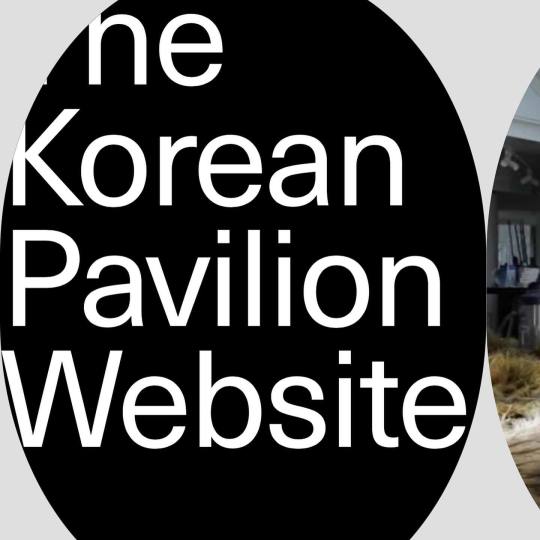
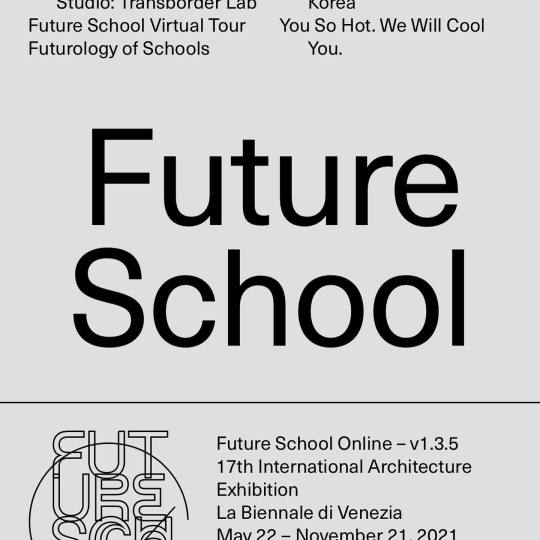
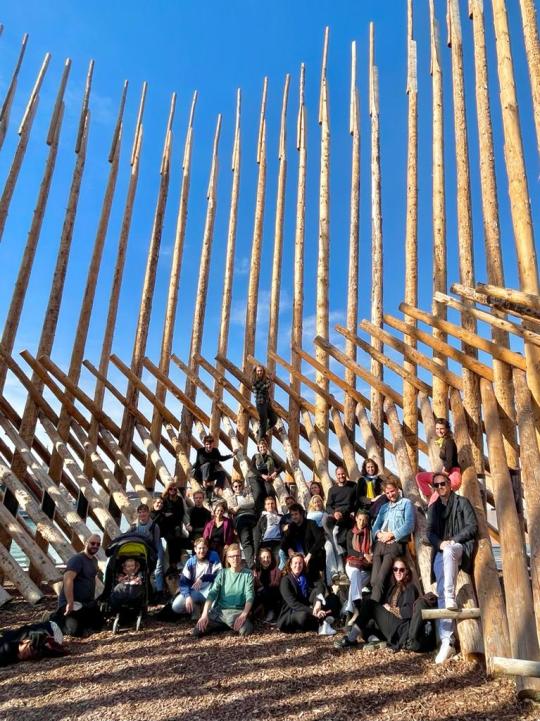
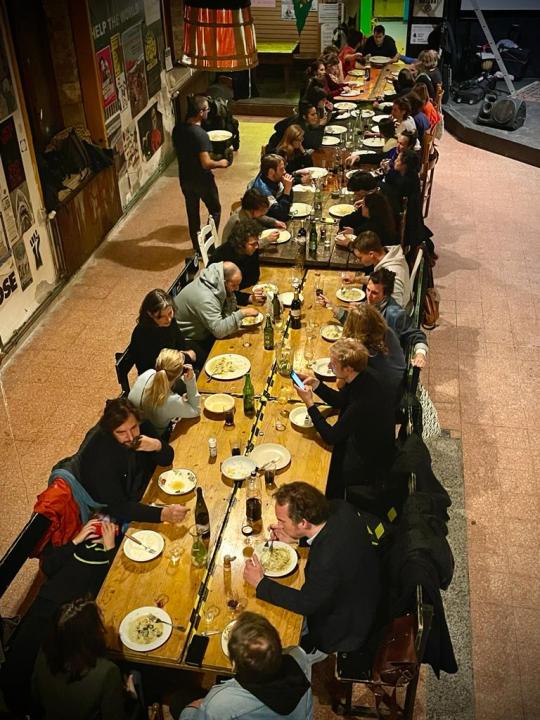
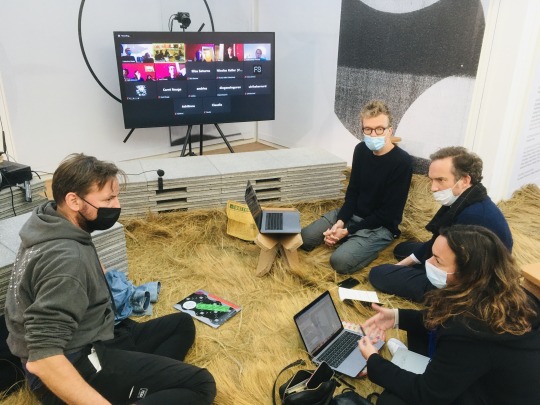
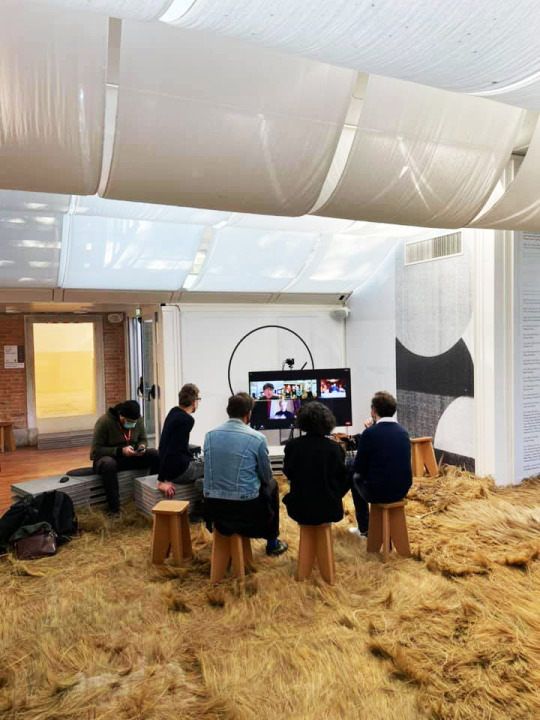
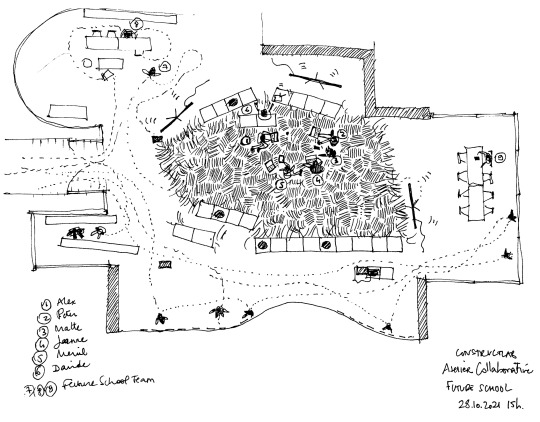
october in Venice Architecture Biennale, with Constructlab, at the Future School, Korean Pavilion 2021 : https://futureschool.kr/en/atelier-collaborative
#spatialpractice#collaborativepractice#venicebiennale#ateliercollaborative#howwewilllivetogether#I-Portunus
0 notes
Text
Workshop Homework
Listening to surroundings: the small valley at the base of my backyard.
Concentrating all of your energy into solely listening feels like all of the senses fitting into one. Not only are my ears being simulated, but my mind is imagining my surroundings as I listen closely to what is happening around me.
Different ways to listen: eyes open to properly identify sounds, or eyes closed to imagine your surroundings just by judging the sounds. The longer and harder you listen for, the more sounds you will hear. There is a noticeable difference between ‘shallow’ listening and ‘deep’ listening.
My relationship between the sound environment and myself is a relaxed tension, where I am not contributing to the sound but simply in the presence of my surroundings and silently listening. It is a very tranquil environment with no stress.
Sounds I heard were a variety of birds, insects, faint car motors in the distance, wind chimes, wind rustling the trees and blowing past my ear canal.
These sounds to me feel comforting and allow me to feel emotionally and physically aware.
I perceive the depth and distance of what was around me (trees, cars, birds)
Time felt to go significantly faster that expected when you are deep in the listening process
Everything in my surroundings is natural and organic. My space is open and vast, so sound does not echo or amplify
0 notes
Photo

Associate Anthony is beginning another year teaching at @csm_news where he lectures on the Spatial Practices course. He also co-leads Studio 8, an undergraduate design unit whom this year, are imagining the creative opportunities that will emerge in a post-work future – a world in which the job no longer builds our character, determines our incomes or dominates our daily lives. ⠀ .⠀ .⠀ .⠀ #centralsaintmartins #spatial #spatialdesign #spatialpractices #archdaily #architecturelovers #architexture #architecture_view #architecture_hunter #architecture_best #architecture_london #architecturephotography #bestoftheday #photooftheday #picoftheday #architecturedesign #architectureporn #architecture #design #architags #RCKa https://ift.tt/2AyaNdg
0 notes
Text
QCQ: The Dialectics of Outside and Inside
Q: We must be free as regards all definitive intuitions-and geometrism records definitive intuitions
C: The idea that physical space limits our internal space, is a very interesting, if diametrically opposed idea. Can we as artists challenge the idea of what constitutes physical space and how we understand its limitations. Can a door mean more than just a separation of space? Where does inside and outside begin and end? I think this is a great problem to work towards unravelling. Many artists have already approached the concepts of what defines spaces. I recall a movie that, although absurd in its premise (it was a comedy), the inhabitants of a hippie commune did away with all the doors so that space flowed from one room to another unobstructed. The private became shared and division were done away with. Or artists who record interior space as memory by recreating the internal space as outer.
Q: How can we reimagine the space between here and there? Doors are so metaphorically charged the questions. Do they have a central point where one can find a center? I have no easy answer for this conundrum.

2 notes
·
View notes
Text
QCQ: Corners
Q: “Yet in such daydreams as these the past is very old indeed. For they reach into the great domain of the undated past. By allowing the imagination to wander through the crypts of memory, without realizing it, we recapture the bemused life of the tiniest burrows in the house, in the almost animal shelter of dreams.”
C: I can’t help but resonate with the idea of memories as daydreams, allusively weaving itself into something new through the act of imagination. The idea of wandering through crypts (and the allusion of death and decay and past and possibly forgotten) as we wander old memories which can no longer be revived like a corpse but embalmed , thus ‘recapturing’ the tiniest fragment of a memory of what was.
Corners as a metaphor, a space in the mind in which to ‘become’, to emerge from, a space of departure, is a great metaphor for orientation. The idea of emerging and projecting out into the open space of the unknown, leaving behind a discarded line of memories, a flotsam and jetsom of previous being. The things collected along the way, reminders of being, housed within the shelter of our neurons. Like a tree, branching from a source as it stretches in undulating chaos toward a source of light.
I like the idea of reimagining a past. A new beginning of a projected self-view. The corner as a safe refuge, “an almost animal shelter of dreams”, where one can reimagine the ‘bemused life’ of the past as a paragon self. Corners, the once domain of the infantilized self, becomes a catapult from whence we are to where we become.
Q: ‘Corners’, the alpha from whence we project ourselves unto cogito, where we think therefore I am, how do we conceptualize a beginning to project oneself from? Do we need think in terms of corners (although an apt metaphor)? From where is our starting point of being, ‘I am’, and how do we use that find our steps, creatively? The labyrinth of memory, how do we navigate, to find our way forward to an ‘exit’ of clarity and purpose? I have no answer, but looking back (should we?) sometimes obscures as much as brings any sense of clarity.

2 notes
·
View notes
Text
POSITIVE FRAGMENTS: CAST II
As part of my project for casting off Clay impressions, I originally chose silicone but then changed to paper. The paper process was a stark contrast to the original metal grate and concrete from which I made the mold. The idea of something so flimsy and thin as a lid for a sewage line seemed ridiculous and incredible. The clay mold itself became part of the work as some sort of shattered remnant, an archeological refuse, salvaged as a memory.





I originally wanted to cast with silicone but rather than make an impression I decided to let the material make the form. I assembled various castings to create phantasmagoric shapes reminiscent of H.P. Lovecraft’s beloved ‘Cthulu’ mythos.






youtube
youtube
youtube
youtube
2 notes
·
View notes
Text
Positive Fragments I






I've been reading various texts on marxists philosophy and specifically the told of education as indoctrination. Working in the studio ironically across from the ROTC center, I was thinking about militarism and nationalism (big state). I wanted to display the piece near a statue of a boot and helmet outside the office but the day was raining and wouldn't allow me. But the piece is also tied to issues of gun violence in this country and how easy it is to aquire one in the name of defense and safety.
2 notes
·
View notes
Text
Self Directed Practice #2
youtube






1 note
·
View note
Text
Idea board: A Wall
After looking at the work of Cecilia Vicuna I was thinking of incorporating fabric to the wall. Specifically cocooning the wall not to dissimilar to a spiders web.




2 notes
·
View notes
Text
QCQ Gordon Matta-Clark

Quote: His work within existing conditions suggests a constructive anti-authoritarian alternative to the teleological utopianism underlying both modernist planning and the Marxist model of revolutionary change: “I am experimenting with alternative uses of space that are most familiar. I like to think of these works as bypassing questions of imaginative design by suggesting ways of rethinking what is already there. I do not want to create a totally new supportive field of vision, of cognition. I want to reuse the old one, the existing framework of thought and sight. . . . [I]t is an organic response to what has already been done.”
Comment: Having read the piece on Gordon Matta-Clark, I couldn’t help feel some kinship with his idea of community and activism and how the vision of his practice fit into that ideology. His work looks to re-imagine structures of our environment used to oppress people and re-purpose their design intent to “reorient” our participation of his work. By re-purposing and cutting out layers from abandoned buildings, his work seeks to envision another perspective on viewership and question of space.
I love his practice as emanating from the ground up, from the grassroots. His organic response to what has already been done to create something new from the pre-existing, allows us to rethink materials and what’s available to us.
Question: Despite the fact that his practice emerges from the political turmoil of New York urban decay and gentrification and helped to situate his practice at the center of the audience he wanted to speak with/to; how can we as emerging visual creators, find our centers of audience in a world of shifting conflicts and turmoil and use our voice in solidarity with the voices of the people in struggle? To this I will add the quote of the famous Puerto Rican Independence political activist and poet,Juan Antonio Corretjer, “Vivir y ayudar a vivir!” (Live and help to live) as opposed to the American version of “live and let live”.
2 notes
·
View notes
Text
Self Directed Project #1
Thinking on Gaston Bachelard's, the Poetics of Space, specifically the section on doors, I was struck with the idea of inside and out as a space of claustrophobia and agoraphobia. Specifically, my intent was to create a space that encompassed the negative rather than the positive space, creating a claustrophobic space, one where you are tunneled inside rather than allowing you to navigate around the sculptural installation.
youtube












1 note
·
View note
Text
Project #4: Index
1. Corners: QCQ
2. Corners: Research
1. 2. 3.
3. Corners: Final
4. The Dialects of Outside and Inside: QCQ
5. Door - The Dialects of Outside and Inside: Research
6. Door - The Dialects of Outside and Inside: Final
1 note
·
View note
Text
Similar to using silicone, I am interested in rope as an art making material due to it’s malleable nature.


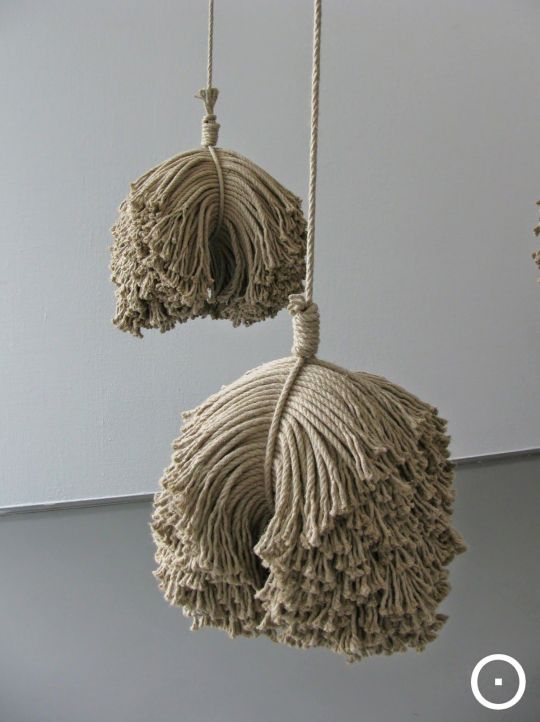



1 note
·
View note